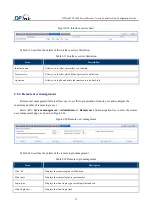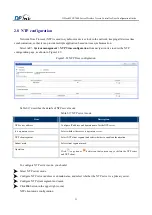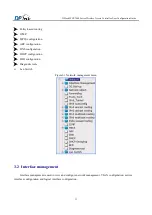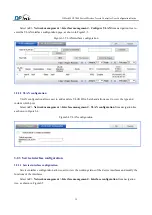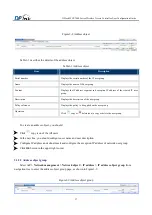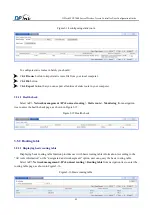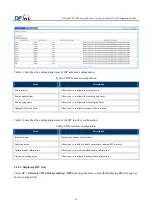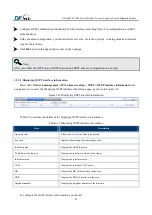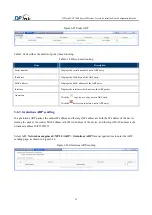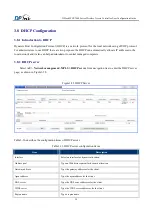
DPtech WCS 7000 Series Wireless Access Controller User Configuraiton Guide
41
3.5.1 Static route
3.5.1.1 Configuring static route
Static route is a kind of special routing configured by the administrator manually. After you configure a static
routes, data message will be forwarded to the specify destination as administrator requirement.
In a simple network structure, only a static route can realize network intercommunication. To improve network
performance, you can properly set routes and use static route, which guarantee the network bandwidth for critical
application.
Before configuring a static route, you need to know the following concepts:
1) Destination address and mask
In the ip route-static command, an IPv4 address is in dotted decimal format and a mask can be either in dotted
decimal format or in the form of mask length (the digits of consecutive 1s in the mask).
2) Output interface and next hop address
While configuring a static route, you can specify either the output interface or the next hop address depending
on the specific occasion. The next hop address cannot be a local interface IP address; otherwise, the route
configuration will not take effect.
In fact, all the route entries must have a next hop address. When forwarding a packet, a router first searches the
routing table for the route to the destination address of the packet. The system can find the corresponding link layer
address and forward the packet only after the next hop address is specified.
When specifying the output interface, note that:
If the output interface is a Null 0 or loopback interface, there is no need to configure the next hop address.
If the output interface is a point-to-point interface, there is no need to configure the next hop address. You
need not change the configuration even if the peer’s address changes. For example, a PPP interface
obtains the peer’s IP address through PPP negotiation, so you need only specify the output interface.
If the output interface is an NBMA or P2MP interface, which support point-to-multipoint network, the IP
address to link layer address mapping must be established. Therefore, it is recommended to configure both
the next hop IP address and the output interface.
You are not recommended to specify a broadcast interface (such as an Ethernet interface, virtual template,
or VLAN interface) as the output interface, because a broadcast interface may have multiple next hops. If
you have to do so, you must specify the corresponding next hop for the output interface.
3) Other attributes:
You can configure different preferences for different static routes so that route management policies can be
applied more flexibly. For example, specifying the same preference for different routes to the same destination
enables load sharing, while specifying different preferences for these routes enables route backup.
Select
AC > Network management > IPv4 unicast routing > Static route
from navigation tree to enter the
configuring static route page, as shown in Figure3-14.

